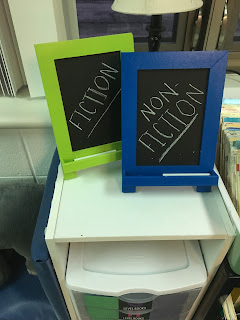Alternative/ Flexible Seating Classroom
Hi Everyone, Amanda here! I wanted to invite you all to take a glimpse of my classroom and my philosophy behind the set up. We all know children are active and the higher demands in the classroom don’t help their little body’s need for movement. I was noticing so many of my kiddos that were doing everything in their power to focus on their tasks at hand, but for some it was simply outside of their realm of ability.
This lead me to reading about flexible seating and alternative seating in the classroom. The whole idea intrigued me. What really stuck with me was the following imagery:
Imagine that active kiddo in your class, we all have someone that comes to mind! We teach
them that they need to sit “criss-cross applesauce” on the carpet, or on their bottoms in a
standard chair to show their are paying attention. Their eyes should be on the speaker if
they are being a “good listener”. That child wants to follow directions, that child wants praise
and to show you they are listening, so they do all of those things. That child is now using all
of the focus they have in order to do those things because it does not come naturally and
easily to them. In doing this, they are not giving you their full attention, they are not fully
engaged and listening, and it’s not their fault! By allowing their bodies to have the natural
movement it needs, we are allowing that child to now focus on the task at hand.
We don’t expect all students to learn content in the same way, so why would we think they all physically learn in the same ways? This thought led me to write a grant for DonorsChoose for 6 Hokki Stools to incorporate into my room. I was shocked when my friends, family, and student families funded it in less than 24 hours. That alone inspired me and reinforced the great need for these items, as well as the overwhelming support behind taking this leap.
When we received the Hokki Stools my kiddos were so excited! Before handing them out to students, we sat down and discussed some rules. The rules we put in place were:
Sit on your bottom.
Be in control of your body.
Take care of our stools - no picking at the seats.
Some bodies need them and some do not. Either way is OKAY!
The biggest rule that we discussed was the last one. These stools lead into a conversation about how our bodies are different and how some of them may try the Hokki Stool and discover it is very helpful, but some will find it is harder for them to focus and learn while moving, and that is OKAY. We discussed how no one, not even a teacher will be able to tell them what is best for their body, it is a special responsibility that they will get to have.
I had 6 Hokki Stools so I chose 6 students to try them out for the morning. I purposely chose 3 that I felt would benefit from them, and 3 that may not like them. This worked out well as one of my students lasted about 15 minutes on the stool and I could see he was uncomfortable. I asked him what he thought of the Hokki Stool and he said, “I don’t think this is good for me, can I get a chair?” I praised him for recognizing this was not “just right” for his body and brought him a chair. Before lunch we sat as a class and asked the chosen students to reflect on what they thought and why. I chose 6 new students to use them for the afternoon and we discussed again before students went home. These discussions helped students to know what kind of “signs” their body may give them as to if the Hokki Stools were the right seat for them.
Overall I was incredibly impressed how easily these stools were incorporated into our classroom. The students used them so naturally and took care of them appropriately. Some of my kiddos that I didn’t think would need them, surprised me by the amount of movement they had while using them. It just proved how much responsibility the students should have over their own bodies, because you can’t lock step everyone. This successful experience only heightened my interest in the topic and persuaded me to dive head first into turning my whole classroom into a flexible/alternative seating classroom.
I’ll let you know more about that next week! Can’t wait to have you all back!























